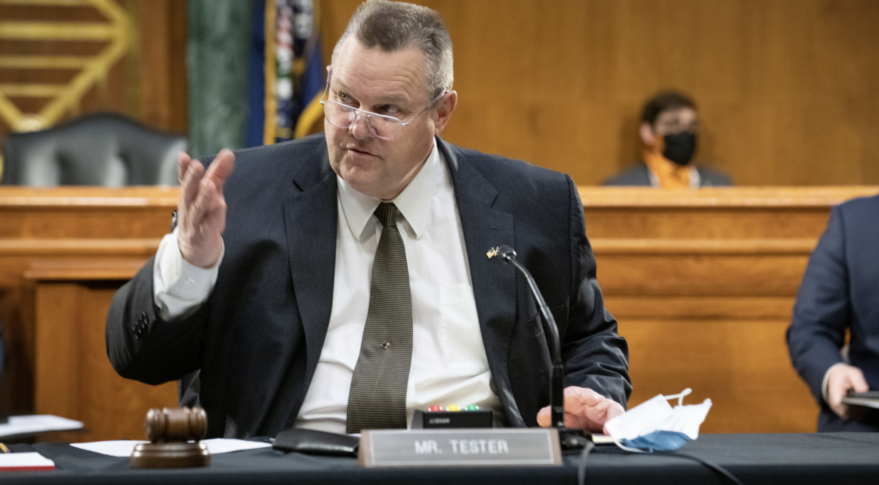
WASHINGTON — Leaders of the Senate Appropriations Committee on July 28 unveiled 12 appropriations draft bills for the upcoming fiscal year, including a defense spending bill recommending a $792 billion budget for the Defense Department.
Sen. Jon Tester (D-Montana), chairman of the appropriations defense subcommittee, said the defense top line is $63.6 billion above what Congress enacted in fiscal year 2022. The increase is needed to “address higher inflation for acquisition programs, goods and services, and higher compensation costs,” the committee said in a statement.
The defense bill adds more than $2 billion for military space programs above what the Biden administration requested. Most of the increase is for satellites and launch services for the military’s missile-warning space network. They include the following:
- $400 million to accelerate acquisition of low Earth orbit missile warning and missile tracking satellites for the U.S. Indo-Pacific Command$300 million to expand the Space Force’s medium Earth orbit missile warning and missile tracking constellation
- $250 million for Space Force test and training infrastructure
- $250 million for defensive measures for high-value satellites
- $216 million for the Space Development Agency to procure two additional launches to accelerate the deployment of low Earth orbit missile warning and missile tracking satellites
- $100 million for tactically responsive launch, a Congress-directed program that DoD has not funded
In a report accompanying the defense bill, Senate appropriators said they want to see a “responsive launch program of record to rapidly place and reconstitute space assets in support of combatant command requirements and space enterprise resilience.” They direct the Secretary of the Air Force to submit to Congress an acquisition strategy for this capability.
The committee also wants DoD to invest in technologies to reach and operate in cislunar space beyond Earth orbit. Last year Congress appropriated $61 million for a cislunar flight experiment and $70 million for a Defense Advanced Research Projects Agency effort to develop propulsion technologies for cislunar flight.
“Developing capabilities and operating within cislunar space is imperative for the nation to obtain national security, science and technology, and economic advantages,” said the report, urging the Secretary of the Air Force to increase investments in this area.
Senate appropriators did not include funding for a Space National Guard but asked for additional information on how current space activities conducted by the Air National Guard will transition to the Space Force.
“The committee notes that there are Air National Guard units conducting space missions and that there is disagreement within the Department of the Air Force on how best to allocate those forces following establishment of the Space Force,” the SAC report says.
Appropriators direct the Department of the Air Force to submit a “full analysis of the costs, benefits, and unit impacts” and to explain future plans to transfer space missions, personnel or equipment of the Air National Guard to the Space Force.
